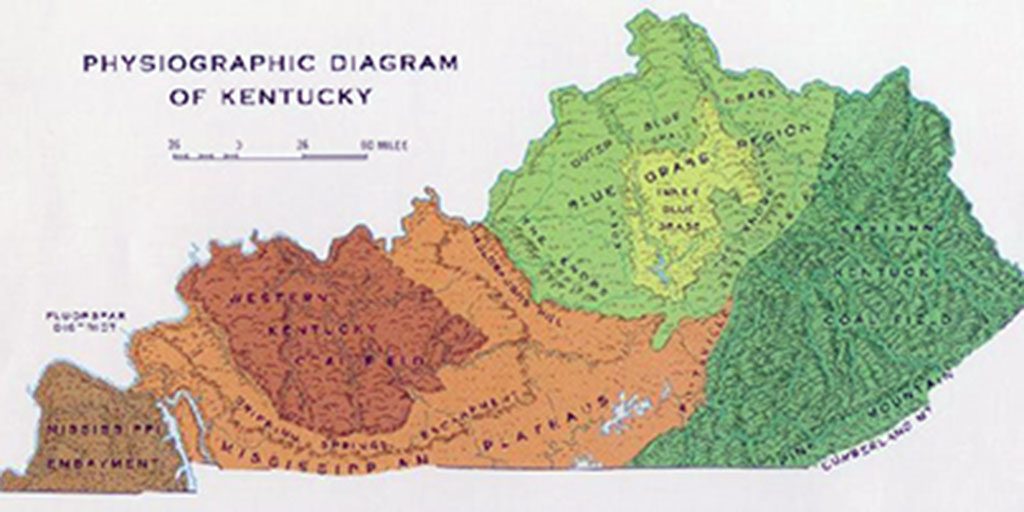In the ‘Land of Knobs’
Posted on June 1, 2019, by Joy Jensen SL

Public domain image courtesy of Joy Jensen
If you drive to Bardstown, Ky., on Route 49 from Loretto, you will see a high, cone-shaped hill rising from the surrounding trees near the hamlet of Holy Cross. Everyone calls it Rohan’s Knob. Upon seeing it, you will know that you are in the Knobs ecologic subregion. According to the U.S. Environmental Protection Agency, the Knobs is part of the Interior Plateau, a diverse ecoregion extending from southern Indiana and Ohio to northern Alabama. You can find limestone and shale among its rocks, and oak-hickory forests and red cedar glades grow throughout the plateau.
A distinctive subregion
The subregion is a narrow, horseshoe-shaped rim of hills that runs 230 miles through several counties. It consists of hundreds of isolated hills wrapping around the Bluegrass subregion; Marion County is in the Knobs. The subregion contains rounded, almost conically shaped hills and narrow valleys with streams. The Knobs subregion was formed during the Mississippian geologic subperiod, and erosion over some 300 million years left erosion-resistant, limestone-capped hills in place. Oak-pine forests are found on the Knobs uplands while oak-hickory forests predominate in the valleys, which are used for cattle and farming.

The Knobs subregion is adjacent to the Bluegrass subregion, which is comprised of the Inner Bluegrass, where Lexington is located, and the Outer Bluegrass, the location of Bardstown. Fires had maintained the savannah-like terrain of the Inner Bluegrass, most likely set by Native Americans, and by vast herds of bison that seasonally grazed the canebrakes (a type of bamboo) in the area. The Outer Bluegrass and the Knobs were heavily forested. The fertility of the Inner Bluegrass drew the early pioneers during the late 18th century.
When the pioneers penetrated the area in the 1770s, no Native Americans inhabited “Kentucky,” derived from the word “Kenta,” meaning “meadow” or “field.” Native Americans to the north and south reserved Kentucky as hunting grounds. Bardstown was founded in 1785. In the same year, Basil Hayden led the first families of the Catholic colonization league to settle near a good creek in the vicinity of a high, cone-shaped hill that we call Rohan’s Knob.
Sources: https://hort.purdue.edu/newcrop/cropmap/Kentucky/maps/KYeco3.html; https:/fwky.gov/WAP/documents/1.11%20Ecoregions%of20Kentucky.pdf; https://www.birdwatchersdigest.com; https://en.wikipedia.org/wiki/Knobs_region; Ramona Mattingly, The Catholic Church on the Kentucky Frontier (1785-1812)
